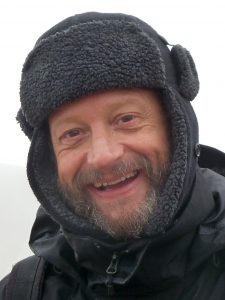
Our guest, Dr. Hans Herrmann from PMMH, ESPCI Paris, France and UFC, Fortaleza, Brazil, is visiting PoreLab at NTNU this week. He will present his research on “Frustrated Bearings” on August 23rd at 10:00 (Trondheim time) at PoreLab premises.
The title and abstract for his presentation can be found below.
Frustrated Bearings A bearing is a system of spheres (or disks) in contact. If in a bearing every loop must be even, one can obtain “bearing states”, in which touching spheres roll on each other without slip. We frustrate a system of touching spheres by imposing two different bearing states on opposite sides and search for the configurations of lowest energy dissipation. For Coulomb friction (with random friction coefficients) in two dimensions, a sharp line separates the two bearing states and we prove that this line corresponds to the minimum cut. Astonishingly however, in three dimensions, intermediate bearing domains, that are not synchronized with either side, are energetically more favourable than the minimum-cut surface. This novel state of minimum dissipation is characterized by a spanning network of slip-less contacts that reaches every sphere. Such a situation becomes possible because in three dimensions bearings of loops of size four have four degrees of freedom. By considering spheres of different size, packings with bearing states can even be made space-filling. The construction and mechanical properties of such space-filling bearings will be discussed. Space-filling bearing states can be viewed as a realization of solid turbulence exhibiting Kolmogorov scaling and anomalous heat conduction. Bearings states can be perceived as physical realizations of networks of oscillators with asymmetrically weighted couplings. These networks can exhibit optimal synchronization properties through tuning of the local interaction strength as a function of node degree or the inertia of their constituting rotor disks through a power-law mass-radius relation. As a consequence, one finds that space filling bearings synchronize fastest, when they are hollow.
